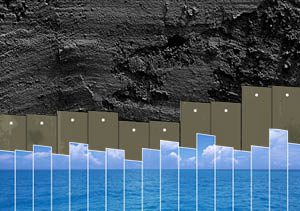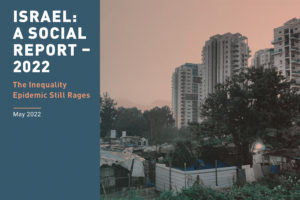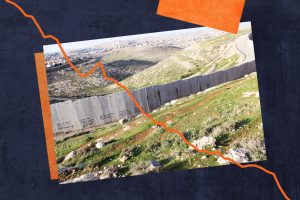The effects of the occupation on Israel’s society and economy. Marking 50 years of the occupation of the Palestinian territories
Read the publication’s summary on our New-Media MiniSite
Public discourse on the high degree of inequality in Israel includes the term “top one percent,” referring to the high concentration of resources and wealth in the hands of a small number of persons. However, a full understanding of inequality in Israel requires reference to an additional top one percent, the political one. This one percent is comprised of the “ideological settlers,” whose political force enables it to veto any step that would lead to a political solution, especially one that would include the creation of a Palestinian state. While the first top one percent reflects the increasing concentration of wealth in Israel, the second contributes to the continuation of the conflict and in so doing to the socio-economic price that Israel keeps paying.
The answer to the question of why socio-economic inequality is so high in Israel is to be found in the ability of the two top one percent groups, the financial and the political, to shape the public agenda and to prevent measures that would reduce inequality and enable more Israelis to become part of “start-up nation.”
Many Israelis relate to the occupation and the ongoing Palestinian resistance as a political or security issue unrelated to internal social and economic matters. This is an unfortunate misconception: The “maintenance” of the occupation is a very expensive enterprise, one that undermines economic growth and hampers the state’s ability to invest in development of the periphery and in raising the standard of living for the majority of Israelis.
- The occupation negatively affects the stability of Israel’s economy and produces an unstable line of growth, especially during times of prolonged confrontations such as the two Intifadas and Operation Protective Edge.
- The most direct cost of the occupation is the military one: between 1988 and 2010, the Israel Ministry of Defense received, in addition to large, ever-increasing annual budgets, supplementary funding in the sum of 55.6 billion shekels earmarked for confronting the Palestinians. Another aspect of the increase in expenses for defense is the diversion of a large part of the budget of the Ministry of Internal Security for maintenance of the occupation.
- The industry that is most sensitive to the Israeli-Palestinian conflict is tourism. Tourism has a huge economic potential, but every violent clash is accompanied by a sharp decrease in tourism.
- Another negative effect of the occupation concerns Israel’s credit rating, as credit rating agencies assign considerable weight to stability. Lower credit ratings mean higher interest payments – and less money for social services. During violent confrontations like the Protective Edge Campaign, the government did not declare an emergency for fear that it would have a negative effect on Israel’s credit rating and in so doing prevented full compensation for citizens and businesses adversely affected by the hostilities.
- Inequality in Israel increased dramatically over the past three decades, and today it is one of the highest in the developed world. Neo-liberal policies were first adopted in 1985, but more drastic steps were taken during the period of the Second Intifada, which was accompanied by one of the most prolonged economic crises in Israel’s history. Those steps included a policy of fiscal restraint that brought about reductions in public spending in general and in expenditures on social services in particular; tax breaks for corporations and individuals, especially the better off; cutbacks in social security payments that led to an increase in the poverty rate and also had an adverse effect on the middle class.
- It is probable that absent the feeling of emergency created by the Second Intifada, such drastic steps would not have been taken. This is the clearest example of the connection between neo-liberalism within the Green Line and prolonged military rule outside of it.
- Economic instability affects not only low income Israels but also large corporations and high earners; however, the latter enjoyed the generous protection of the government, in the form of tax cuts, cheap credit and a consistent policy of lowering the cost of labor.
- The prolonged conflict is especially damaging to Arab citizens of Israel, who lag behind the Jewish population on all indicators of economic development and standard of living. The conflict makes it difficult to disperse questions of loyalty to the state and postpones the adoption of more generous land policies that are crucial to economic development.
Download report’s summary (PDF)





